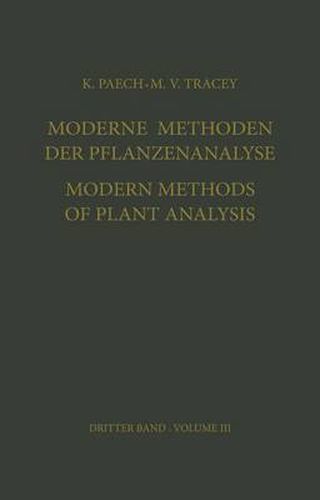Readings Newsletter
Become a Readings Member to make your shopping experience even easier.
Sign in or sign up for free!
You’re not far away from qualifying for FREE standard shipping within Australia
You’ve qualified for FREE standard shipping within Australia
The cart is loading…






If, following the solvent extraction of a hydrocarbon from a plant, it is not known whether it is one or the other, a method of distinguishing the two is described by HENDRICKS, WILDMAN and JONES (1946). The technique involves the infra-red absorption spectra of the two isomers. At about 12 mp. the relative absorption coefficient of rubber is 42% greater than for gutta. ScHLESINGER and LEPER (1951) describe two procedures for separation of the rubber and gutta hydrocarbons from large quantities of crude chicle. In one, the chicle is extracted with benzene which dissolves both isomers. An excess absolute ethyl acetate is added and the mixture stored at 5 Degrees C overnight. The gutta precipitates out and the rubber remains in solution. The other method is as follows: (1) Ten grams of chicle are extracted with acetone for 24 hours in a Soxhlet extraction apparatus. (2) The insoluble material in the thimble is allowed to .. it dry, then immersed in 150 ml. of cold Skellysolve B in a refrigerator at 10 Degrees C and* allowed to stand for 48 hours with occasional agitation. (3) The thimble is then removed from the solvent and the enclosed residue washed several times with fresh, cold Skellysolve B. (4) An excess of acetone and a few drops of a concentrated aqueous solution of sodium iodide are added to the combined Skellysolve B extract and washings and allowed to stand overnight in a refrigerator.
$9.00 standard shipping within Australia
FREE standard shipping within Australia for orders over $100.00
Express & International shipping calculated at checkout
If, following the solvent extraction of a hydrocarbon from a plant, it is not known whether it is one or the other, a method of distinguishing the two is described by HENDRICKS, WILDMAN and JONES (1946). The technique involves the infra-red absorption spectra of the two isomers. At about 12 mp. the relative absorption coefficient of rubber is 42% greater than for gutta. ScHLESINGER and LEPER (1951) describe two procedures for separation of the rubber and gutta hydrocarbons from large quantities of crude chicle. In one, the chicle is extracted with benzene which dissolves both isomers. An excess absolute ethyl acetate is added and the mixture stored at 5 Degrees C overnight. The gutta precipitates out and the rubber remains in solution. The other method is as follows: (1) Ten grams of chicle are extracted with acetone for 24 hours in a Soxhlet extraction apparatus. (2) The insoluble material in the thimble is allowed to .. it dry, then immersed in 150 ml. of cold Skellysolve B in a refrigerator at 10 Degrees C and* allowed to stand for 48 hours with occasional agitation. (3) The thimble is then removed from the solvent and the enclosed residue washed several times with fresh, cold Skellysolve B. (4) An excess of acetone and a few drops of a concentrated aqueous solution of sodium iodide are added to the combined Skellysolve B extract and washings and allowed to stand overnight in a refrigerator.